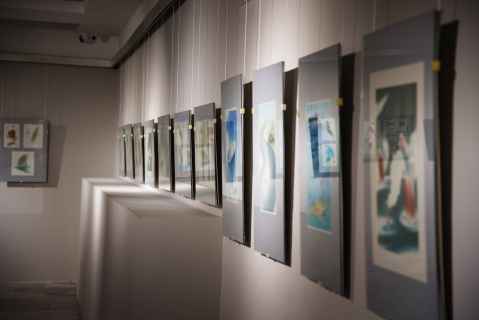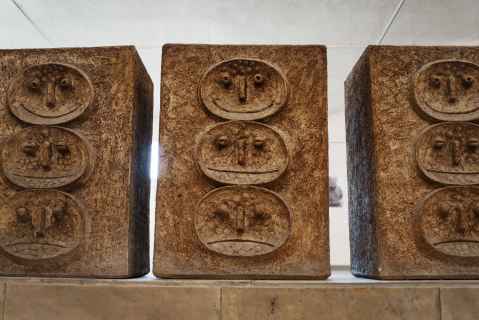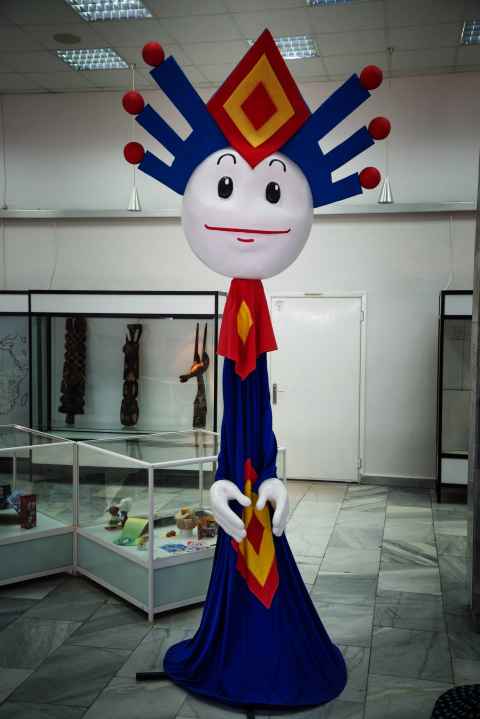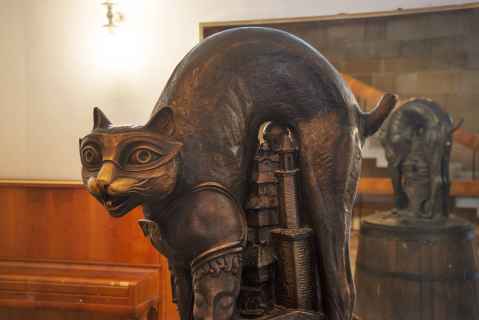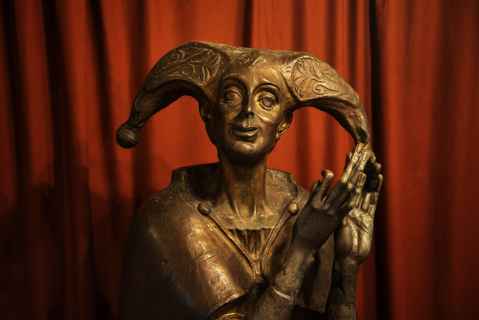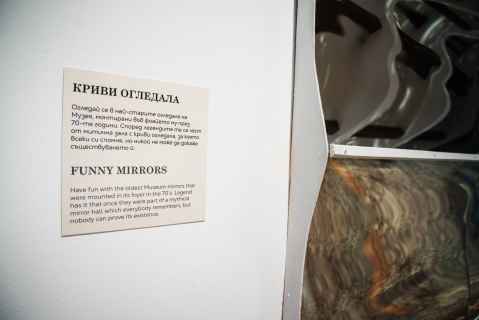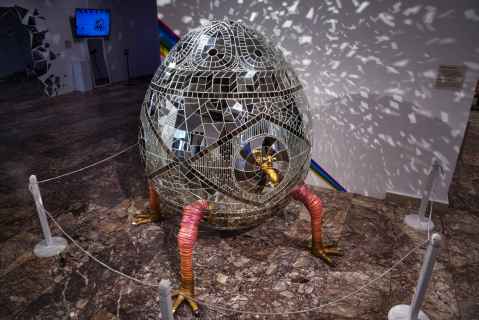The House of Humor and Satire
The World Lasts Because It Laughs
This article would not have been possible without the help of Bogdan Fortunov, who provided a detailed and comprehensive account of the museum's history.
Bulgaria is split along the east-west axis by the Balkan mountains, an imposing range whose Botev Peak sits near the geographical center of Bulgaria. To the east of the peak, at the north end of the Shipka Pass, which connects northern Bulgaria with southern Bulgaria through these mountains, in the valley of the Yantra river, lies the city of Gabrovo. The area has been inhabited since the stone age, but it wasn't until the 14th century that population grew from a small village of 100 houses to a small town. Being situated on a river that provided ample water power for workshops, and on an important north-south trade route, the small town grew into a large, prosperous industrial town by the 19th century.

ul. Bryanska 68
5300 Gabrovo
Bulgaria
Home page
A one-of-a-kind museum with a history that is as interesting as the museum itself. Well worth a visit. (5/5)
1. The Capital of Humor
The thrifty mountain tradesmen of Gabrovo had spawned a number of anecdotes centered on the Gabrovonian death-grip on the purse[b], and those anecdotes now spread with the town providing goods and services to all of Bulgaria and beyond. Overall they were - to put it diplomatically - less than flattering, but Gabrovo wouldn't be Gabrovo if they couldn't be turned into something good.
If you can't beat them, join them
, as it's said: Gabrovo took the anecdotes as evidence and started to market itself as the capital of humor. The municipality announced a competition and offered a prize of five lev for each new joke. When the competition ended the municipality was asked how many new jokes had been collected. None! They were all old.
was the answer, which became the newest Gabrovo joke. Stefan Fortunov, a legal adviser to the city government, helped by his son Bogdan, compiled the competition entries into an illustrated book of Gabrovo anecdotes[c]. The book was published in 1966 in Bulgarian, English, Russian, German and French, compiled by Stefan Fortunov, edited by Radoi Ralin, and illustrated by Boris Dimovski.
Six years later Stefan Fortunov's plan to create a museum of humor and satire in Gabrovo was approved - on April Fools' Day, 1972. Not a small feat - the communist governments of eastern Europe were not known for their relaxed attitude to anything that could be interpreted as opposition to the state. It took three years to convert an old leather factory by the river to a museum, and in 1975 the museum opened its doors.
The museum took over the organization of a National Festival of Humour and Satire that encompassed a carnival procession, national and international cartoon exhibitions, an International Biennial of Cartoon and Small Sculpture, a national joke-telling competition, a national competition for humor and satire in literature, a festival of film comedies and cartoons
[*][d].
2. Computerization
By 1980 the museum was in contact with more than 15,000 artists and organizations, and had amassed more than 81,000 items in twelve fields: painting, caricature, drawing, illustration, graphics, sculpture, literature, satirical murals, masks and carnivals, laughter, posters and philately. The amount of information required new methods to catalog and disseminate, and fortunately technologies for this were becoming available.
A project for automated information processing in the field of art history was initiated at the museum and sponsored by UNESCO. The project became a family project, with four Fortunovs taking part in it: Stefan Fortunov, the director of the museum, who in turn delegated the work to his two sons Bogdan and Radoslav. Radoslav's wife Anelia was then involved in the design and specification of the system. The project acquired a special family significance and responsibility in addition to its international and national significance.
Work began in early 1983 and by August the same year they had an ACT Sirius 1 / Victor 9000[e] computer set up at the museum and connected to the other side of the Iron Curtain, despite the curtain being very much drawn at this time. The computer was configured with the following software:
WordStar[h] - a word processing application - and MailMerge[i] - an addition to WordStar that made it easy to conduct mail campaigns
various auxillary software
Development progressed and by December 1985 the museum had a viable system. The greatest challenges were adapting a command-line-only 7-bit-ASCII-text system to organize media with text written in all European alphabets (excluding Greek), which impacted database design and also required fonts to be designed. Images and photographs could not be stored in the database, so they were assigned reference numbers that were stored in the database. While these obstacles seem trivial today, they were new and solved for the first time in Bulgaria.
By the end of 1995 the House of Humor and Satire had a system for automated information processing based on a relational database containing information about authors, their addresses for correspondence, descriptions of works, and information about available negatives and slides. It also had reference data: information sources, terms and concepts in art history, and so on. With the addition of a laser printer and the design of new fonts for it the museum could do full prepress.
My brother and I were proud that we coped with the challenging task of creating a workable system to help the House of Humour and Satire start a systematic, organized, and consistent defense of its claim to be a unique world institute for popularizing the humor of nations. Because of the participation in its creation of four Fortunovs, we called the system the "fortune system"
— Bogdan Fortunov
3. Today
So much for history - what about the museum today?
First, it's worth a visit. While some of the cartoons require some knowledge of what they satirize, there are many that lampoon the human condition and institutions like the church and state, for which you neither need knowledge of current affairs or an ability to read Bulgarian. Second, it's not an exhibition where you will scream of laughter and roll back and forth over the museum floor, rather it is a quiet, subtle, philosophical wit that is on display. The cartoons should be seen as much as works of art as ways to make you laugh.
At the bottom floor is an interactive exhibition of funhouse mirrors, augmented with today's digital technologies.
